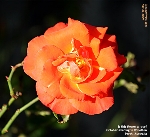|
Toa Payoh Vets Clinical
Research
Making veterinary surgery alive
to a veterinary student studying in Australia
using real case studies and pictures |
|
Two common
perceptions of first-time puppy
owners
Dr Sing Kong Yuen,
BVMS (Glasgow), MRCVS
First written: Nov 22, 2009. |
Caucasian lady 20-30 years old
Miniature Poodle 5 months (X)
bought first.
Miniature Poodle 3 months (Y)
bought 1 month after the first
puppy.
Purchased from the same pet shop.
Playpen with bed + newspapers
advised by the pet shop operator.
Puppies live in an apartment
This case illustrates 2 common
perceptions of first-time puppy
owners all over the world as
regards toilet training and how
the vet may advise the owner.
Thinking No. 1
"X
is not as intelligent as Y as X
still pees and poop all over the
apartment. Y just goes to the
newspapers," the slim and
tall fair European lady commented
when I asked how she managed to
train two puppies. This was part
of my research in toilet training
of puppies in Singapore.
Based on performance, Y appears
more intelligent. He knows what
the owner wanted.
It is like having 2 children. One
will be smarter than the other.
However, the circumstances of
upbringing will be different as
you can see here.
I asked, "How long have you
confined the second pup (Y) to the
playpen to train her to use the
newspapers?"
"4 weeks," she said.
"I guess you only confined the
first pup (X) for less than 2
weeks," I said.
"Yes," the young lady replied.
"Around 2 weeks."
"There is insufficient time for X
to be paper-trained," I concluded
that the puppy was given much
freedom to roam around the
apartment. This is a common
practice of new puppy owners. X
was the first puppy and he was
given more freedom.
"The whole apartment will be full
of urine smells," I said.
"I mop the floor with detergent,"
the lady said.
"The mop will be full of urine
smells," I explained. "A canine
nose is very sensitive to urine
smells. He will pee anywhere as
the whole apartment is full of
smells.
"The 2nd pup is presently
paper-trained. But later, he would
emulate the first pup and
eliminate everywhere."
"What should I do?" the lady
asked.
"Confine the first pup. Neutralise
the puppy's urine smell on the
apartment floor with white vinegar
at a part of vinegar to 3 parts of
water. Use a rag or cloth to wipe
the floor with this mixture, not
the mop."
Will this advice work?
Thinking No. 2
"The first puppy knows he had done
something wrong," the young lady
said during the course of our
conversation. "He feels guilty and
quickly runs away when he has peed
outside the newspapers!"
I commented about this urination
accidents, "The puppy runs away
because he sees that you are very
angry. You may spank him, as many
Singapore's puppy owner do."
"I don't do it," the young lady
said. She was not entirely
convinced about my explanation
that the puppy ran away out of
fear, rather than out of guilt.
 "We
think that puppies experience
guilt for misbehaviour," I said.
"Some puppy book authors explain
that the puppies are worried about
being beaten up and therefore runs
away to hide on seeing an angry
face of the owner." "We
think that puppies experience
guilt for misbehaviour," I said.
"Some puppy book authors explain
that the puppies are worried about
being beaten up and therefore runs
away to hide on seeing an angry
face of the owner."
This hypothesis was not really
acceptable to the lady as she did
not physically injure the puppy.
So, I was at a loss as to what
explanation to give as regards the
running away of the "guilty"
puppy. It could be the fear of
imminent beating. Self
preservation. A fear of a big
human giant "Goliath" by a small
pup "David" without a sling.
"As the first puppy is now 5
months old, it is important that
you confine him in the playpen to
paper-train him again. When he is
mature at 6 months of age, he will
be rebellious and is very
difficult to paper-train," I
advised. "This is like children
who have grown up. It is very
difficult to impart to them good
values when they are in the
rebellious growth period of
adolescence."
The same applies to a bud. If the
nuturing of the bud during growth
is not good, e.g. insufficient
nutrients, a beautiful flower will
not blossom unlike the picture of
a healthy beautiful "rose-like"
flower shown here. |
|
 Toa Payoh Vets Toa Payoh Vets
Clinical
Research |
|
|
Copyright ©
Asiahomes Internet
All rights reserved. Revised: November 23, 2009
Toa
Payoh Vets
| |
 TOA
PAYOH VETS
TOA
PAYOH VETS TOA
PAYOH VETS
TOA
PAYOH VETS